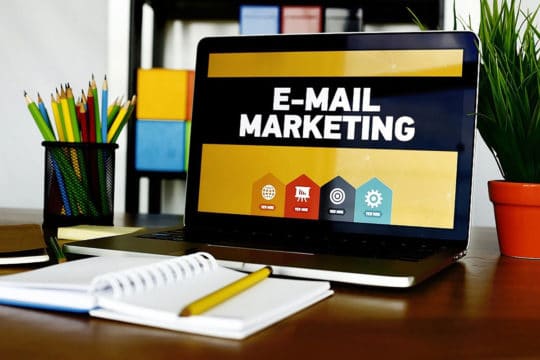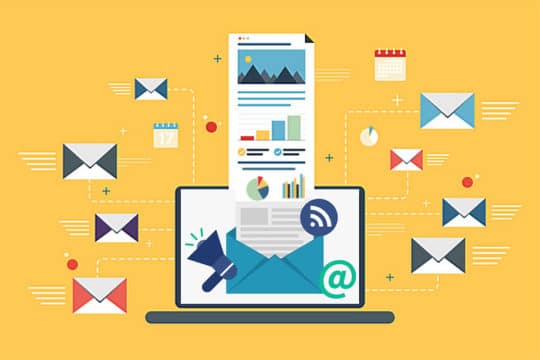When we talk about email sender reputation, we practically refer to the IP address that sells an email and its reputation. This is what signals to the email inbox provider if the email is likely to be a spam message or not.
Several factors are taken into account when determining if an email sender is a spammer or not. Some of the most important things analyzed are quality of contacts, content quality, and how previous emails were received when sent from the particular IP address. However, many other factors can be analyzed based on the email provider receiving the message.
What is important to remember is that almost all email inbox providers, including Yahoo and Gmail, use IP reputation (also referred to as sender score, email sender reputation, or IP score). This is done in order to determine if the email will be sent to the receiver’s inbox or be diverted to the spam folder.
Every single experienced email marketer understands the importance of email sender reputation. They use services like email validation exactly to reduce the likelihood that their carefully crafted messages will be identified as spam.
What should you know about email sender reputation? Let’s discuss the most important things.
How do email providers assess the reputation of the sender?

The email provider uses different programs to assess risks and monitor behavior for IP addresses that deliver messages to the entire network. This means that when you send an email to any Gmail address, the IP is analyzed and the result of that analysis will count for when you send an email to any other Gmail address.
The factors that are often taken into account to evaluate the reputation of the sender vary but the common ones are:
- The quality of email addresses that the IP address sends messages to.
- Volume trends.
- Engagement level for recipients.
- Content quality.
At the end of the day, you want to make sure that your reputation as a sender is not tainted. There is nothing that you can do to influence how you are perceived by the receiver’s provider. However, you can do everything in your power to reduce the likelihood you are labeled as a spammer.
Recommended for you: Top 5 Email Marketing Tool to Transform Your Business (Infographic).
How to check the reputation of your email sending IP?

Whenever you have some deliverability issues, you have to check your IP sender reputation. You might have sent some emails that were perceived as spammy without even being aware of. Or the IP address might have been included in a blacklist.
Check your IP email sending reputation through one of the following methods:
1. Return Path Sender Score

Return Path uses a special benchmark called Sender Score. What this means is that when you get a score that lowers from 85 to 70, you can expect deliverability to decrease by around 20% for your email marketing campaigns.
Get your free Sender Score report at SenderScore.org. You just need to enter the IP address of your email to receive it.
2. Cisco’s Talos Domain and IP Reputation Center

Talos Intelligence is a part of Cisco. It offers various network security solutions, including the possibility of looking up an IP address’s sender reputation. The scores you receive are “poor”, “neutral”, and “good”, together with extra data about related sender Ips and volume history.
How to improve email sender reputation?

If you determined that your sender reputation is low, it is time to take active steps to improve it. Fortunately, there are always ways in which you can do this. Below you can find some of the most effective methods professional email marketers use right now.
You may like: Email Marketing Decorum – 10 Do’s & Don’ts for Campaign Success (Infographic).
1. Clean the email list

The truth is that most people never clean the email address that they send their campaigns to. This is a huge mistake because you spend more money to send email messages and there is a pretty good possibility many of the email addresses on the list are no longer active.
Email marketers need to regularly remove all the unengaged or inactive users from their lists. The sender score will be negatively impacted by receivers that regularly do not open emails sent from your IP address.
As a very simple example, let’s say an email account was abandoned by the owner. They just do not open any email because they never log in. Eventually, this leads to hard bounces. At the same time, it is possible that your emails were marked as spam so they are never actually seen or opened. You cannot know something like this happened but you can remove the email address from your mailing list when it never opens your emails.
The best thing that you can do is to use an email validation service like Snov.io. This lets you quickly check your entire email list to remove addresses that are most likely inactive or that no longer exist.
Remember that cleaning the email list should be done at least 4 times per year. Obviously, you can segment your list first and gradually delete the inactive emails so you do not end up deleting a very good one by mistake.
2. Check purchased email lists before using them

Many businesses buy email lists from data suppliers in an attempt to get new customers or at least leads. This is an option that seems to be very convenient since it allows you to quickly grow the email list. However, what you buy might be filled with several email addresses that are not relevant or active. As a result, your sender score can be negatively impacted since receivers will not engage with the emails you send.
An easy solution for this is to check all the emails in the purchased lists before you use them in your marketing campaigns. The same type of service we mentioned in the previous point is more than enough for you.

3. Send high quality content

Many email marketers compromise the quality of their messages for quantity. This is a huge mistake since when you just send an email campaign that is inappropriately crafted, it is very easy for receivers to complain. They will mark your messages as spam.
Whenever you create email content, remember the following:
- Do not oversell what you are offering.
- Test every single one of the links included.
- Optimize the email template for mobile receivers.
- Never use spam words.
- Avoid bait and switch in subject lines.
- Format content for increased readability.
It is not at all a bad idea to add some images too so that the email looks more attractive. Also, you should always get straight to the point since email users never like receiving long emails that beat around the bush.
4. Consistently send your emails

Many email marketers overlook this very important step. Email frequency is important for sender score calculation. Balance is always needed when email content calendars are created.
Whenever you send emails too often, users are annoyed and complaints are generated. Also, when you mail them too little, you miss out on countless sales opportunities.
You need to be very clear with users that register to your email list. You have to tell them how frequently they will receive emails from you and you need to stick to the schedule you promise. Also, make sure you adapt volume frequency to email list growth. For instance, if your subscriber list grows fast, it might be perceived as buying email lists. Adjust your frequency a little to deal with that.
5. Check for spam traps

The last thing we should mention is very dangerous for email marketing campaigns and most email marketers do not even know it exists. A spam trap is very dangerous because it can get your Ip blacklisted.
Two types of spam traps are common:
- Pristine Traps: These are email addresses that are created by blacklist organizers or ESPs. They post them all around the internet. Usually, they end up on email lists when they are harvested or scraped by bots. Oftentimes, the email list gets these in them because you buy email lists online.
- Recycled Spam Traps: These email addresses were real in the past but they were abandoned. ESPs deactivate them and when they are present in your email list, they will hard bounce. You can also end up blacklisted for not following the best email marketing sending practices.
You may also like: How to Create an Email Template with HTML & CSS?
Conclusions

To sum up, your sender score is a very important thing you need to always keep your eyes on whenever you send messages to an email list. Follow all the tips mentioned above and as your list grows, make sure that you invest in quality services that help you to properly manage your email marketing campaigns.
The good news is that it is very easy to protect your email sender reputation. You just need to use only the best email marketing practices and work with service providers that have a spotless reputation in the industry.



